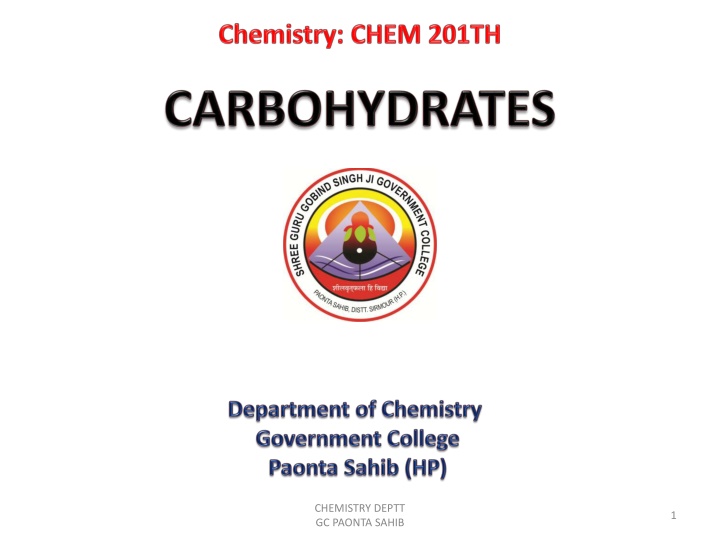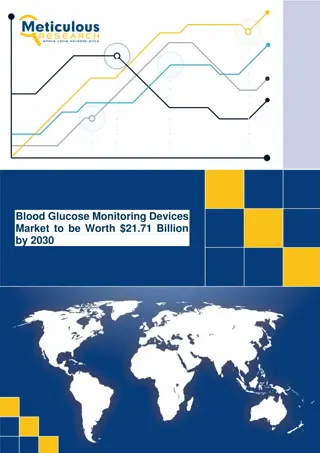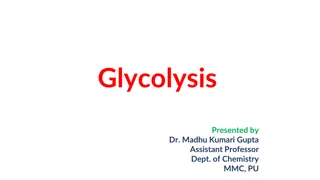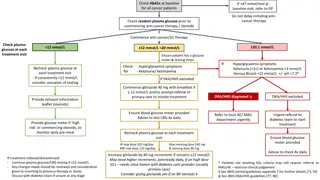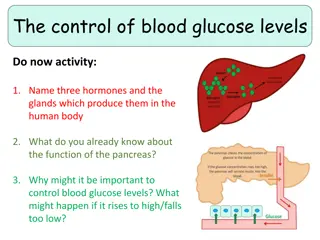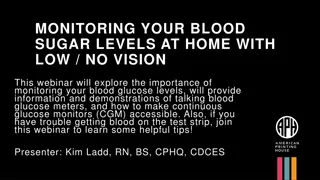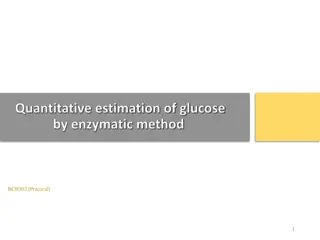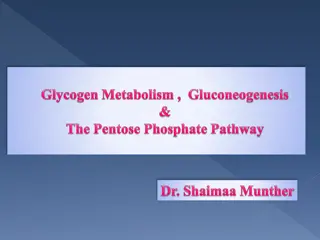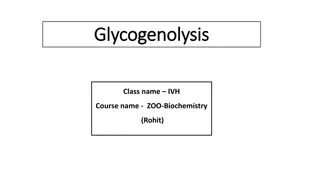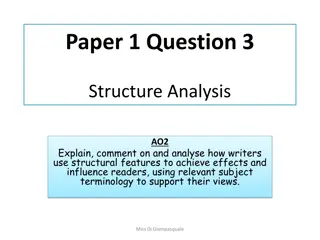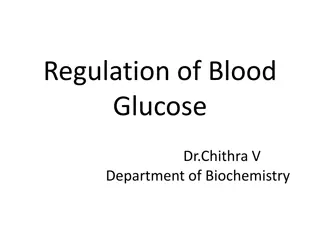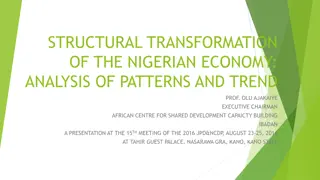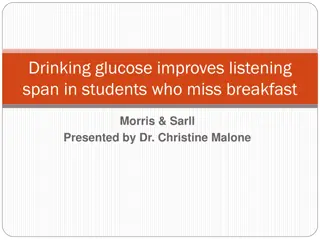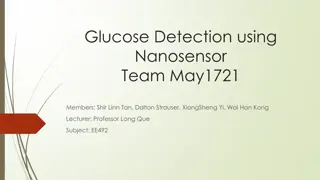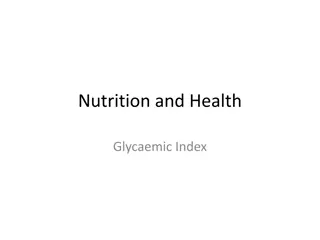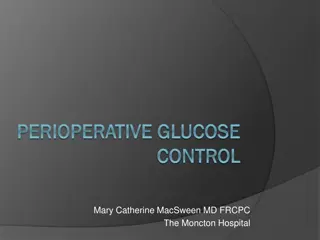Epimerisation of D-Glucose into D-Mannose: Structural Insights
Explore the fascinating process of epimerisation, specifically the conversion of D-glucose into D-mannose. Discover the limitations of open chain structures, the ring structure of glucose, and the evidence supporting it. Learn about the stereochemistry of D-glucose, optical rotation, and the equilibrium mixture composition. Delve into the proposed ring structure of D-(+)-glucose by Tollen and Haworth. Unveil the intricate molecular transformations underlying these biochemical phenomena.
Download Presentation

Please find below an Image/Link to download the presentation.
The content on the website is provided AS IS for your information and personal use only. It may not be sold, licensed, or shared on other websites without obtaining consent from the author.If you encounter any issues during the download, it is possible that the publisher has removed the file from their server.
You are allowed to download the files provided on this website for personal or commercial use, subject to the condition that they are used lawfully. All files are the property of their respective owners.
The content on the website is provided AS IS for your information and personal use only. It may not be sold, licensed, or shared on other websites without obtaining consent from the author.
E N D
Presentation Transcript
CHEMISTRY DEPTT GC PAONTA SAHIB 1
Epimerisation of Aldose i.e. conversion of D-glucose into D-mannose Limitations of the open chain structures Ring structure of glucose Evidence in favour of ring structure 2 CHEMISTRY DEPTT GC PAONTA SAHIB
Epimerisation of Aldose i.e. conversion of D-glucose into D-mannose Epimerisation: One of two molecules that differ in the spatial arrangement of atoms or groups surrounding only one of two or more chiral atoms in the structure o If an aldole is oxidised by bromine water to give corresponding aldonic acid, which on further heating with pyridine gives a mixture of original acid and epimeric form. o Epemeric acids are seprated and then heated to corresponding -lactone which is on subsequent reduction with sodium amalgam and water gives the epimeric aldose. CHEMISTRY DEPTT GC PAONTA SAHIB 3
Limitations of the open chain structures of Glucose Open chain structure of D-glucose failed to explain the following facts o D-glucose does not undergo certain characteristic reactions of aldehydes, e.g. reaction with NaHSO3, NH3 and Schiff s reagent test. o D-glucose reacts with hydroxyl amine while penta-acetate of glucose does not react indicates the absence of aldehydic group in glucose penta-acetate. o Thje UV spectrum of D-glucose does not show the presence of aldehydic group. CHEMISTRY DEPTT GC PAONTA SAHIB 4
o D-glucose exists in two stereo isomeric forms viz. -D(+)-glucose & -D-(-)- glucose. if a solution of -D-(-)-glucose is dissolved in water, its specific optical rotation will be +18.7 . Over time, some of the -D-(-)-glucose will undergo mutarotation to become -D(+)-glucose, which has an optical rotation of +112.2 . The rotation of the solution will increase from +18.7 to an equilibrium value of +52.7 as some of the form is converted to the form. The equilibrium mixture is about 64% of -D-glucopyranose and about 36% of -D-glucopyranose CHEMISTRY DEPTT GC PAONTA SAHIB 5
Ring Structure of D-(+)-Glucose Tollen (1883) suggested that glucose does not have a free aldehydic group but has the cyclic hemiacetal structure. He argued that since -OH and -CHO groups are the part of the same molecule. Therefore, any of the -OH groups may be involved in intramolecular hemiacetal formation. Haworth (1926) later on revised the structure and suggested that glucose contains a six-membered ring structure in which C5-OH is involved in hemiacctal formation. CHEMISTRY DEPTT GC PAONTA SAHIB 6
and Forms of D-(+)-Glucose CHEMISTRY DEPTT GC PAONTA SAHIB 7
Evidence in favour of Ring Structure of D-(+)-Glucose (I) The phenomenon of mutarotation exhibited by glucose anomers can be explained due to facile opening and closing of hemiacetal ring. CHEMISTRY DEPTT GC PAONTA SAHIB 8
CHEMISTRY DEPTT GC PAONTA SAHIB 9
(II) The typical aldehydic reactions of D-(+)-glucose such as cyanohydrin, oxime and osazone formation, reduction of the Fehling s reagent, etc. can be easily explained in terms of the small amount of the open chain form present in the equilibrium mixture of the two anomers. (III) The formation of two anomeric methyl glucosides can be explained in terms of cyclic structures. CHEMISTRY DEPTT GC PAONTA SAHIB 10
CHEMISTRY DEPTT GC PAONTA SAHIB 11
Ring Size of D-(+)-Glucose Haworth Projection Formulae of and Forms of D-(+)-Glucose CHEMISTRY DEPTT GC PAONTA SAHIB 12
CHEMISTRY DEPTT GC PAONTA SAHIB 13
